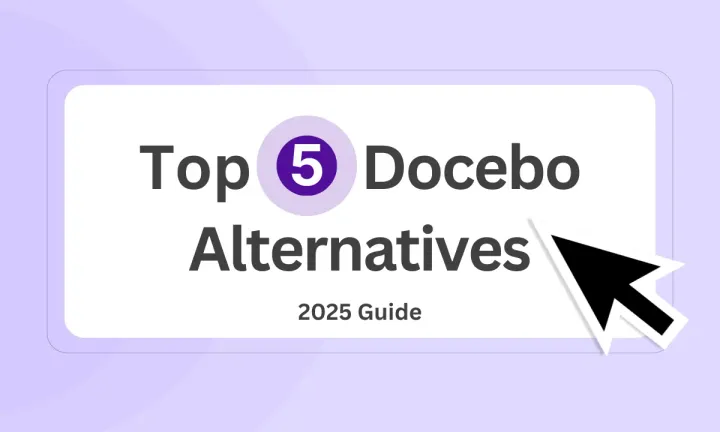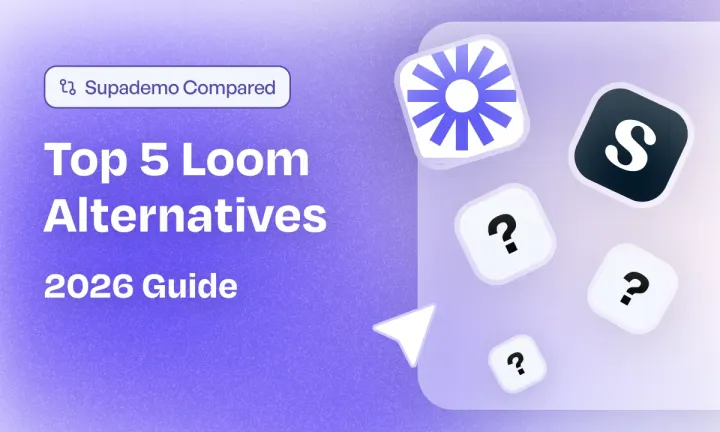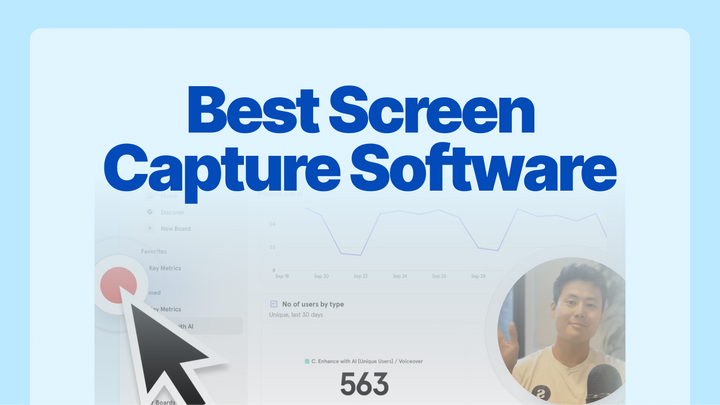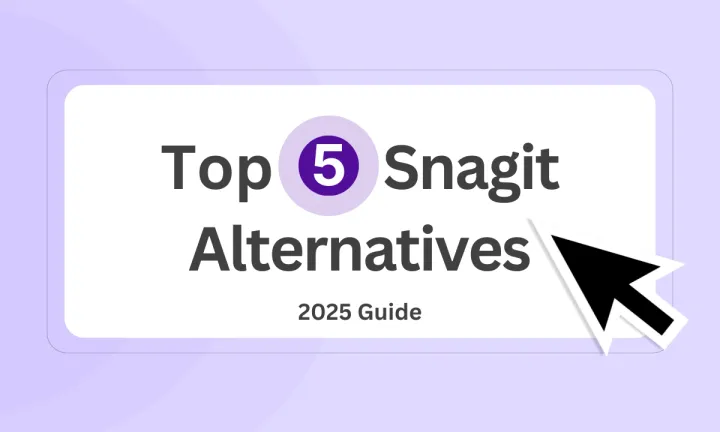Docebo is among the best learning management platforms to build a comprehensive library of courses and micro-lessons, both self-paced and instructor-led.
But it might not be the right solution depending on your buisness size, use cases, budget, and training requirements.
In fact, after digging deep into the LMS space, we identified 5 top alternatives to Docebo—each offering better features at a competitive price.
So, if you're weighing your options, we'll guide you to the best solution.
Short on minutes? Check out this quick summary of the best Docebo alternatives and competitors in 2025.
TL;DR
- LearnUpon: Best for building multiple learning portals for customers' and partners' training
- Skilljar: Best for customer training and monetization of learning content
- Continu: Best for building AI-powered, adaptive learning modules for internal workforce and external attendees
- Trainual: Best for SMBs to create SOPs, onboarding, and process documentation
What is Docebo?
Docebo is a learning management system (LMS) for medium to large enterprise businesses. It supports different learning approaches, including courses, webinars, virtual classroom sessions, gamification, and microlearning. You can use a blended learning model to train your co-workers and employees on your product and other relevant skills.
Docebo supports education on desktop and through its mobile app, Go Learn—giving learners the flexibility to learn on the go. You can also host courses on Docebo or launch them via LinkedIn Learning and Skills integration.
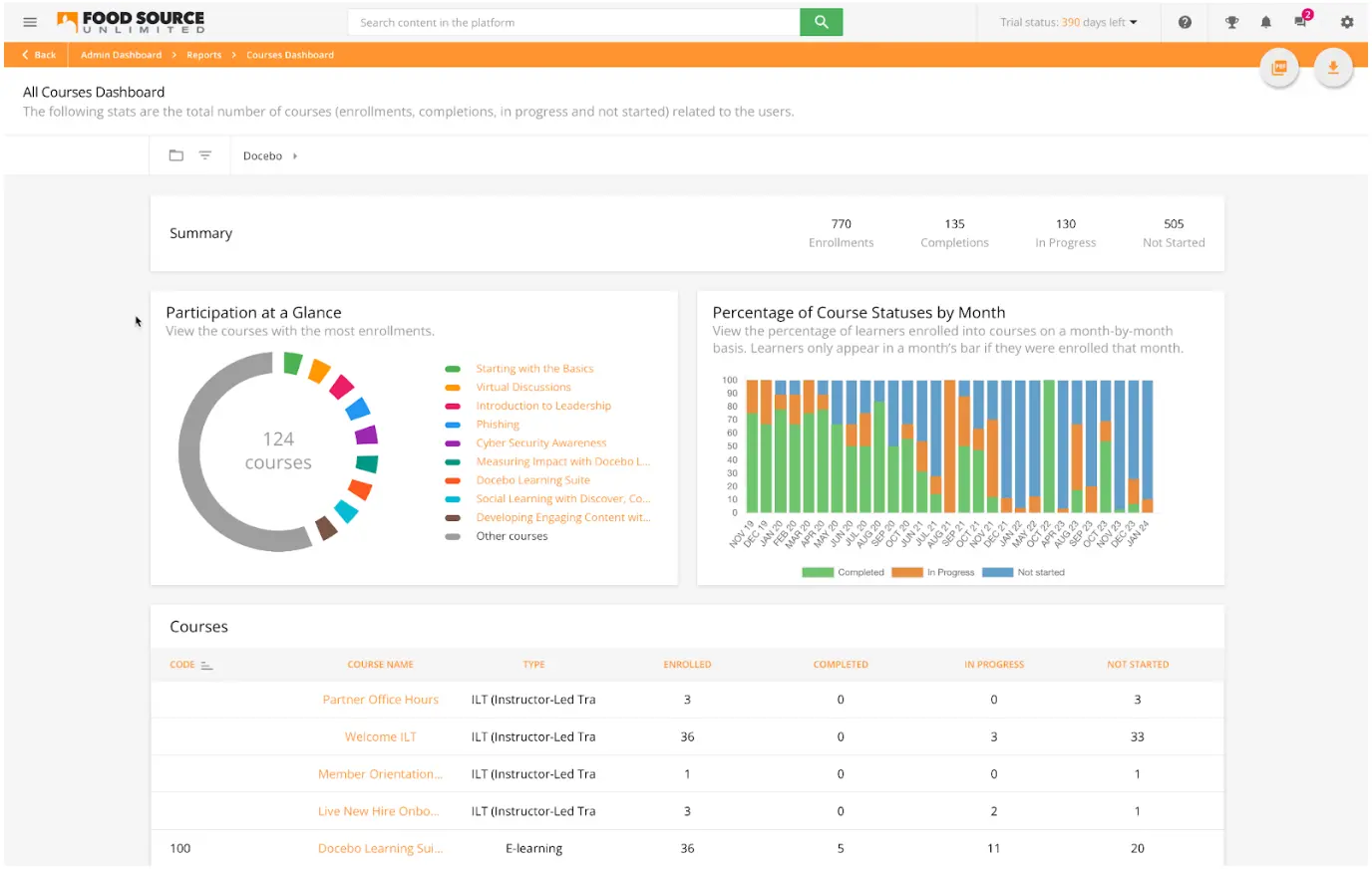
Why do customers look for Docebo alternatives? (with proof)
From the top, Docebo seems like a suitable digital learning platform with ample customization and support for 40+ languages. However, it’s not the ideal solution for every organization.
After reading 100s of Docebo users’ reviews and analyzing its features, we have identified three core reasons for exploring other solutions.
Not affordable for smaller teams
Docebo positions itself as a learning management system designed especially for medium to large enterprises. Thus, its pricing is also tailored to fit high budgets, making it an expensive choice for small-sized businesses.

Additionally, if your organization is still in the early phase of implementing an LMS or has fewer than 250 learners, Docebo might not be the best fit. It can not only hit your budget but also take longer to set up, increasing training costs.
Supports limited use cases
If you want to educate partners, customers, and stakeholders along with your team members, Docebo might not be the right solution.
While it supports learning for different audience groups, its features are more inclined toward training internal team members. Due to this, it's less adaptable for educational institutions, nonprofits, or organizations with unique learning approaches.
Non-intuitive experience for admin
While building a digital learning system, the learner's experience matters a lot.
So does the experience for the one building the content, aka you, the admin.
Docebo doesn’t excel in the latter aspect, creating a steep learning curve for the users in the backend. What should be simple administrative tasks often require multiple steps or specialized knowledge, increasing the time investment required.

What are the best alternatives to Docebo in 2025?
We have shortlisted 5 Docebo alternatives that address its shortcomings and provide comprehensive solutions for building learning systems for internal and external members.
Here’s a quick rundown of all the options. 👇🏼
| Docebo Alternatives | Best For | G2 Rating |
|---|---|---|
| Supademo | Training and educating customers and employees through interactive product demos | 4.7 |
| LearnUpon | Building multiple learning portals for customers' and partners' training | 4.6 |
| Skilljar | Customer training and monetization of learning content | 4.6 |
| Continu | AI-powered, adaptive learning for internal and external teams | 4.7 |
| Trainual | SOPs, onboarding, and process documentation for SMBs | 4.7 |
1. Supademo
Supademo isn't a full-fledged alternative to Docebo for building and managing an end-to-end learning portal. Instead, it focuses on educating and training different stakeholders through a more practical and immersive approach—interactive product demos.
Unlike Docebo, where you need to set up everything from scratch, with Supademo, you can build a huge library of interactive demos through multiple methods—screen recording (Chrome extension, Mac app), Figma Plugin, Image/video uploads, and HTML recording.
The tours emulate your product’s interface and enable learners to get a real-world view to master different features and use cases.
What are Supademo's key features?
Sleek and advanced demo editor
Supademo has the most intuitive no-code demo editor using which you can polish every aspect of your demos.
Whether you want to reorder the slides or customize the hotspot text, you'll find all the tools in our demo editing toolkit.
- Hotspot styles: Choose from three designs—pointer (point to specific areas), callout (add a general callout anywhere), or create a custom area
- Backgrounds and frames: Use the default recorded frame as background or upload images or add solid color
- Background music: Make each demo more engaging and easy to follow with ambient music
- Data blur: Hide sensitive data by blurring it during or after recording
Apart from the design aspects, you can also humanize each demo for specific audiences.
- Create personal connections by adding introduction videos of yourself welcoming them to the product tour
- Personalize every experience through dynamic variables like viewer names, company information, and other custom details
- Record and add your voice, dictating steps in between
Above all, you can cut short the editing time and scale content creation by saving your brand style guide—everything from color palette to brand logo.
Centralize content through multi-demo showcases
With Supademo's showcase feature, you can set up interactive demos in an organized and accessible format. This way, the learner gets a less overwhelming and clear learning pathway.
You can organize the showcases by creating separate sections based on the demo's relevance. For instance, if you're building a training kit for new hires, you can structure it by feature. Each feature section can include details such as its benefits, use cases, and real-world examples to provide clarity and context.
And these showcases are as easy to share as individual demos. You can embed them on 100+ platforms, including Notion, Confluence, or Coda, or share a link with the learner.
AI-focused demo creation tools
Supademo speeds up the entire creation process with built-in AI capabilities that are not available in Docebo:
- Generate descriptive and engaging text callouts from simple prompts
- Add natural-sounding voiceovers in between slides, available in multiple languages and accents
- Quickly localize your content across more than 15 languages, making your training materials accessible to global audiences
- Translations module: Translate any Supademo into multiple language right from the editor with switchable region-specific text and voiceovers.
What are Supademo's pros & cons?
✅ Quick and flexible methods to record the product's interface
✅ Offers multiple ways to share training material with the learner
✅ Built-in AI tools expedite the content creation and publishing process
✅ Can work easily with multiple stakeholders through native collaboration tools
❌ Compared to Docebo, Supademo is focused on building interactive product demos rather than a comprehensive e-learning portal.
Why is Supademo the better alternative to Docebo?
Docebo setup involves a longer implementation process and is structured around passive learning modules, which may not suit all businesses.
Supademo, on the other hand, is specifically designed for companies that prioritize interactive, hands-on learning.
It is a better solution for small teams (under 250 employees) that need a simpler, faster way to educate users or employees without the overhead of a full LMS.
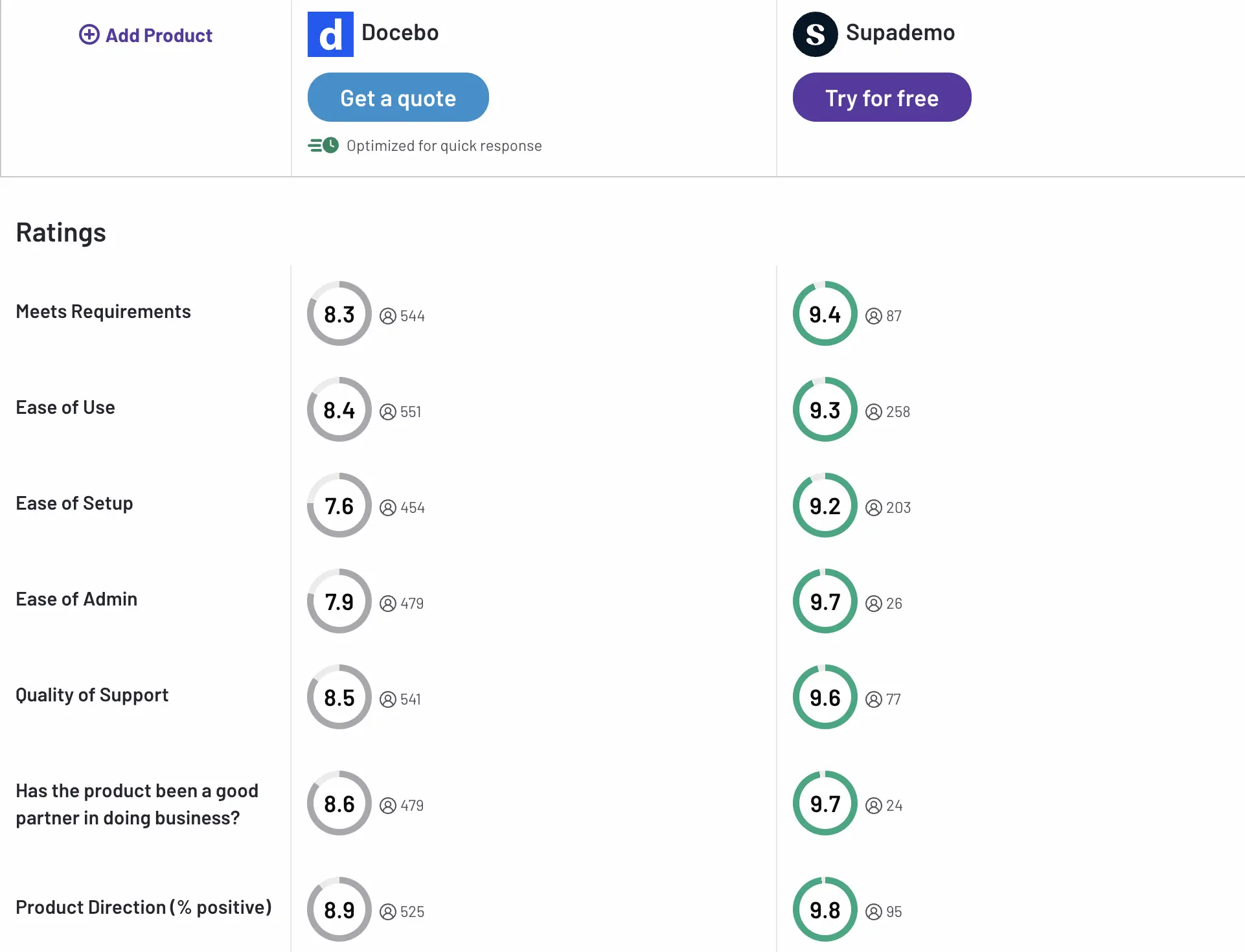
Here’s when a demo automation platform like Supademo might be a better alternative.
- You want to quickly onboard users and educate them on specific product features to reduce the product adoption time
- Your training goals are focused on product usage rather than broader knowledge
- You want users to learn through doing rather than passive consumption
- You have limited resources for setting up a complex LMS
- Your training needs are relatively simple or targeted
Still not convinced? Compare Supademo vs. Docebo on a range of features 👇🏼
| Feature | Supademo | Docebo |
|---|---|---|
| Best use case | Customer onboarding, employee education and training, sales enablement | Employee training and education on a variety of topics |
| Best suited for | Small to mid-sized businesses | Large to enterprise-level businesses |
| Pricing (annual billing) | Starts at $27/mo | Custom plans |
| Interactive product demos | ✅ Yes | ⛔️ No |
| Content creation method |
|
Manually add course content in the tool's content editor |
| Analytics | Tracks key metrics like total views, number of viewers, clicks & demo completion rates | Tracks learner's progress and engagement across all training courses |
| Custom branding | ✅ Yes | ✅ Yes |
| Content personalization | ✅ Yes | |
| Conditional branching | ✅ Yes | ⛔️ No |
| Content organization | ✅ Yes | ✅ Yes, but not intuitive for the admin |
| Native AI tools | ✅ Yes, 15+ languages supported | ✅ Yes, but only for content recommendations |
| Calendar and forms embed | ✅ Yes | ⛔️ No |
| Figma Plugin | ✅ Yes | ⛔️ No |
2. LearnUpon
LearnUpon allows you to build and manage a large library of learning resources for different types of learners—employees, partners, customers, and members. It specifically caters to mid to large-sized businesses with its extensive range of features.
LearnUpon is one of the closest Docebo alternatives, with similar use cases and industry focus. However, it is much easier to implement and is better suited as a customer training solution due to the multi-learning portal offering, while Docebo is more focused on in-house training.

What are LearnUpon’s key features?
- User management: Create and manage learners into groups, customize access, disable or enable accounts, and set expiry dates.
- Portals: Build various education portals for different audiences or departments and add gamification, leaderboards, and course recommenders to boost student engagement.
- Learnupon Anywhere: Embed LearnUpon courses directly into your product or service, allowing learners to access and complete it without leaving the product.
What is LearnUpon’s pricing?
Pricing for LearnUpon is gated behind a demo. You need to book a call to get a custom quote.
What are LearnUpon’s pros & cons?
✅ Easy to scale and manage training resources through multiple education portals
✅ Intuitive interface with ease of building and customizing learning hubs
❌ Course categorization for the admin can be a time-consuming process due to the lack of organizational feature
❌ Lack of customized reports limits the insights into learner’s performance and progress
3. Skilljar
Skilljar is a sophisticated LMS designed to manage learning resources while creating a comprehensive academy for internal and external learners. With its low-code content builder, you can create courses, lessons, quizzes, live training, catalog pages, learning paths, and SCORM lessons.
It is a better alternative to Docebo for organizations that need an LMS to fast-track public training. It also offers built-in monetization, giving you options to offer free vs. paid courses without relying on external apps.

What are Skilljar’s key features?
- Low-code builder: Create tailored learning journeys for different audience segments, ensuring personalized and relevant training experiences.
- Insightful analytics dashboard: Offers a snapshot of various analytics reports, including path, quizzes, group analytics, and strategic insights. All timestamps are in PST, and data refresh in real time, except Group Analytics, which updates every 24 hours.
- Content monetization: Launch paid courses with flexible payment options by integrating with your Stripe, PayPal, or Salesforce account.
What is Skilljar’s pricing?
Skilljar offers three tiers, pricing for which is available upon request only.
Here’s what is offered in each plan.👇🏼
Professional: Includes 2 academy sites with custom themes, premium integrations, content syndication, and external management.
Enterprise: Includes 3 academy sites with custom themes and premium integrations
What are Skilljar’s pros & cons?
✅ User-friendly and intuitive for users with limited HTML/CSS knowledge
✅ Easy course creation with embedded assessment methods
❌ Despite being user-friendly, admins may face a complex UI with many layers to navigate before launching training
❌ To build fully customizable and on-brand courses, coding knowledge is required
4. Continu
Continu is a leading training management system (TMS) that helps you deliver training for employees and public attendees. You can train employees on new product features, onboard customers with a custom learning hub, and educate partners.
Continu stands out as a solid Docebo alternative as it supports online and in-person learning in a much more intuitive interface. You can also use it to surface content quickly for in-person or virtual workshops.
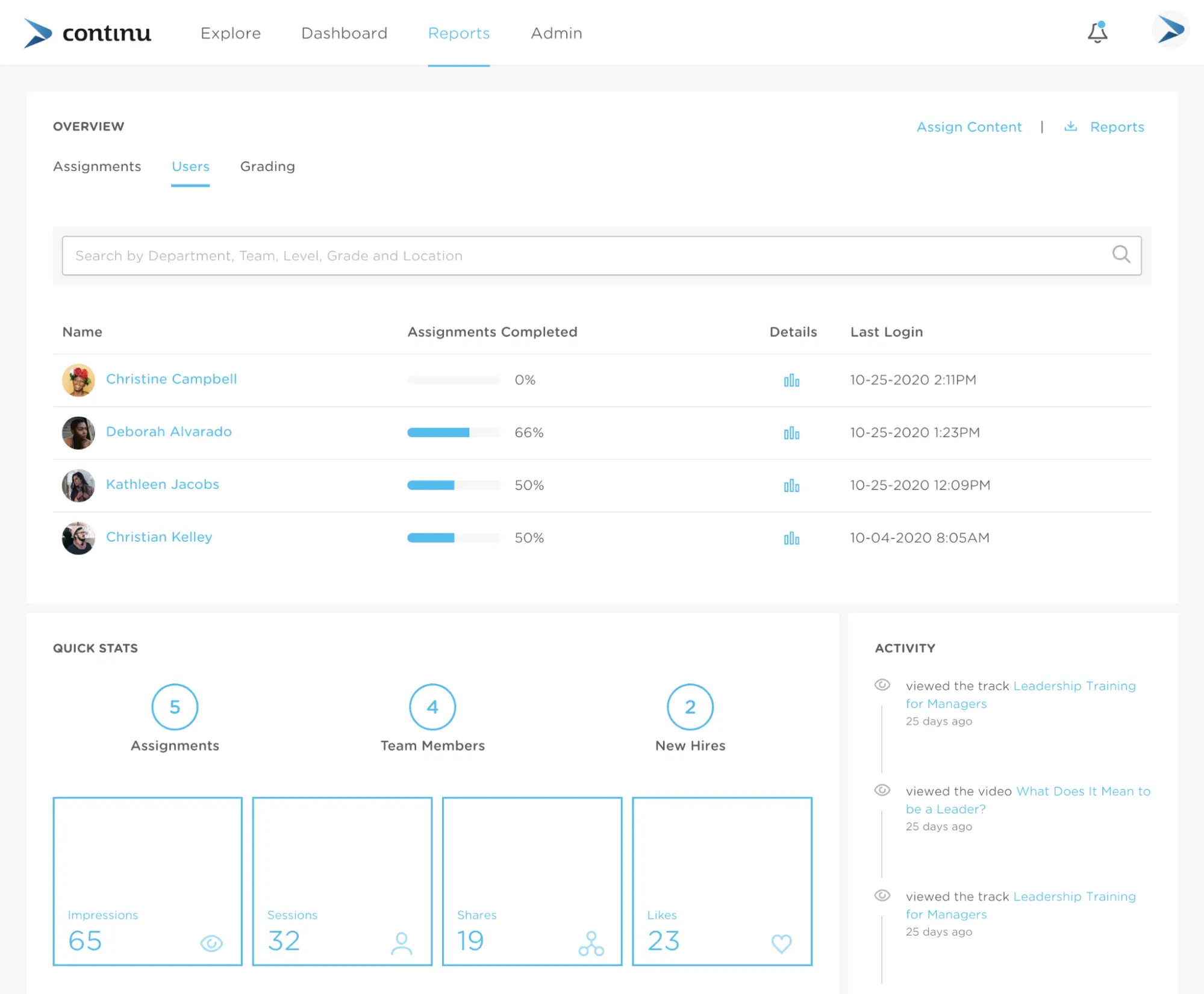
What are Continu’s key features?
- Smart segmentation: Personalized learning based on user attributes such as department, grade, or location and automates content assignments based on predefined events or learner interaction.
- Continu AI: Recommend content based on an individual's learning pace, interest, or style, summarize course content, and generate captions.
- Extend: Manage learning among external users (partners, customers, or clients) by building customized learning hubs.
What is Continu’s pricing?
Professional (1001 - 5000 employees): Includes external user profiles, multi-session workshops, Udemy for businesses, and LinkedIn learning integrations.
Enterprise (5,000+ employees): Includes webhooks, API, custom fields, sandbox environments, and white-glove implementation.
What are Continu’s pros & cons?
✅ Easy to use due to a minimalist and intuitive interface
✅ Ample content customization options to personalize content based on learning material and users
✅ Offers an organized and convenient learning experience to attendees
❌ Implementation time can take up to 60 days
❌ Seach filter often does not return the right training material for learners
❌ No mobile app available to encourage on-the-go learning
5. Trainual
Trainual is a comprehensive learning management software to create SOPs, employee training paths, and onboarding guides. You can choose from existing templates, upload your content, generate text with AI, or assemble a guide by typing yourself.
Unlike Docebo, Trainual is purpose-built for small businesses that want to standardize learning experiences. It’s also a better alternative for teams who plan to hire or train employees at a large scale.
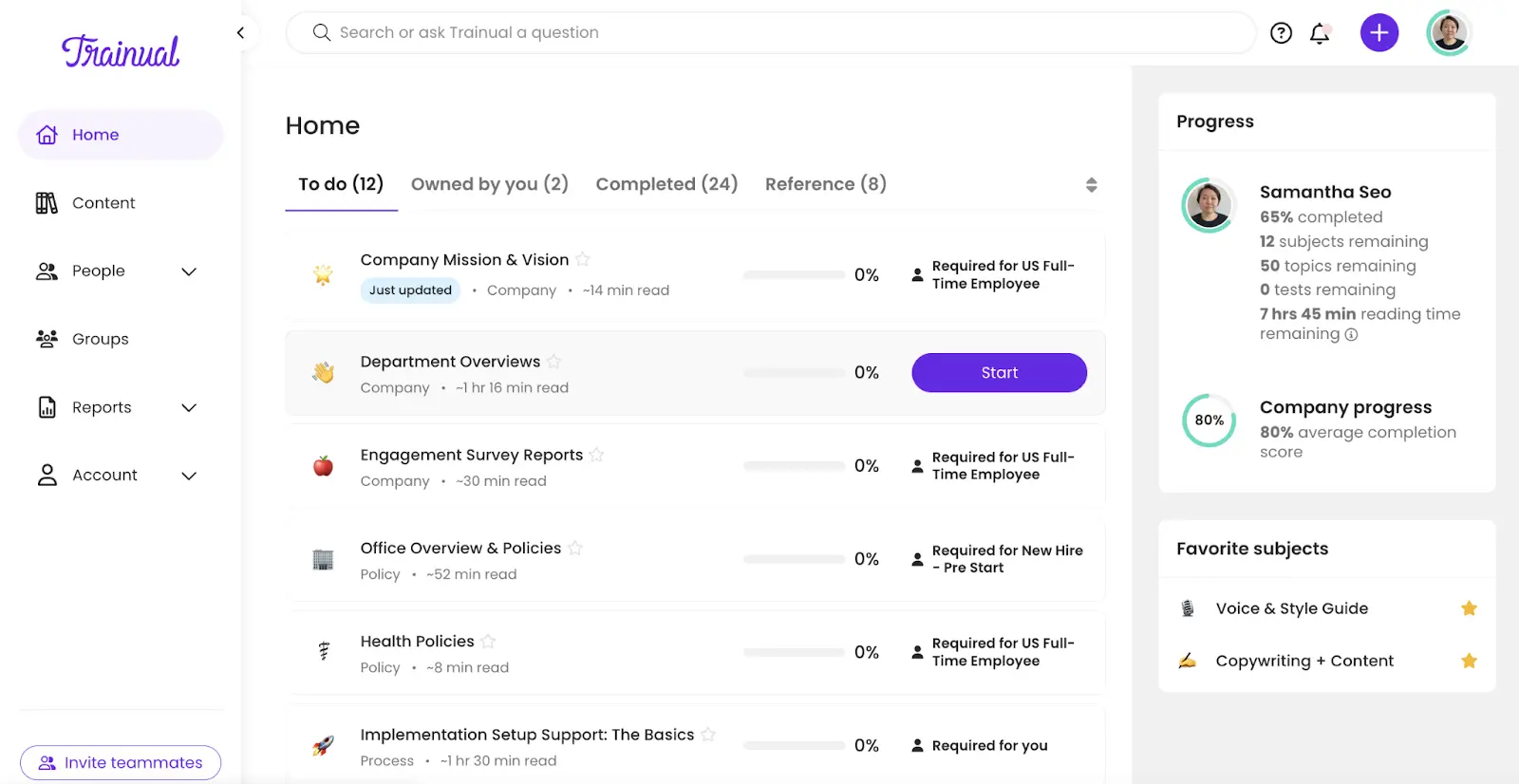
What are Trainual’s key features?
- Training paths: Organize training material sequentially for effective learning during employee onboarding.
- Multi-language support: Translate the entire learning content into different languages, including English, Spanish, French, German, and Portuguese.
- Reporting: Build detailed training paths and track team-wide and individual progress reports anytime or monitor the team’s completion of specific processes or policies.
What is Trainual’s pricing?
Trainual offers four pricing tiers, each of them giving access to all of the features. The only difference is the number of employee seats supported at each pricing tier.
Medium: $349/month for 26-50 seats
Growth: $499/month for 51-100 seats
Custom: For 100-10,000+ employees
You can get a 7-day free trial for all the plans, but no free plan is offered.
What are Trainual’s pros & cons?
✅ Can embed multimedia like video and GIFs within documents
✅ Huge library of over 700 employee onboarding, training, and SOP templates
✅ Easy to keep training material organized for quick retrieval
❌ Integrations are sparse, and users often rely heavily on Zapier to automate tasks
❌ Non-intuitive and time-consuming text formatting options
❌ Group-based seat and pricing plans might not be justifiable for smaller team sizes
Beyond Docebo: Finding the right alternative
A complex LMS like Docebo is best suited when you have a large database of learners in your organization and have the resources to implement in over a long period. But, for organizations who'd like a versatile tool that can handle a variety of uses cases: among others, employee training, an alternative like Supademo is the best bet.
Not only can you build and manage a library of interactive tours with ease but you also gain insights into how each learner is engaging with the training material. And, all of this comes into a per-user pricing of $27/month.
Want to give it a whirl before making any commitments? Get started with Supademo's trial & free plan and claim 5 free interactive demos (and a ton of other features).


